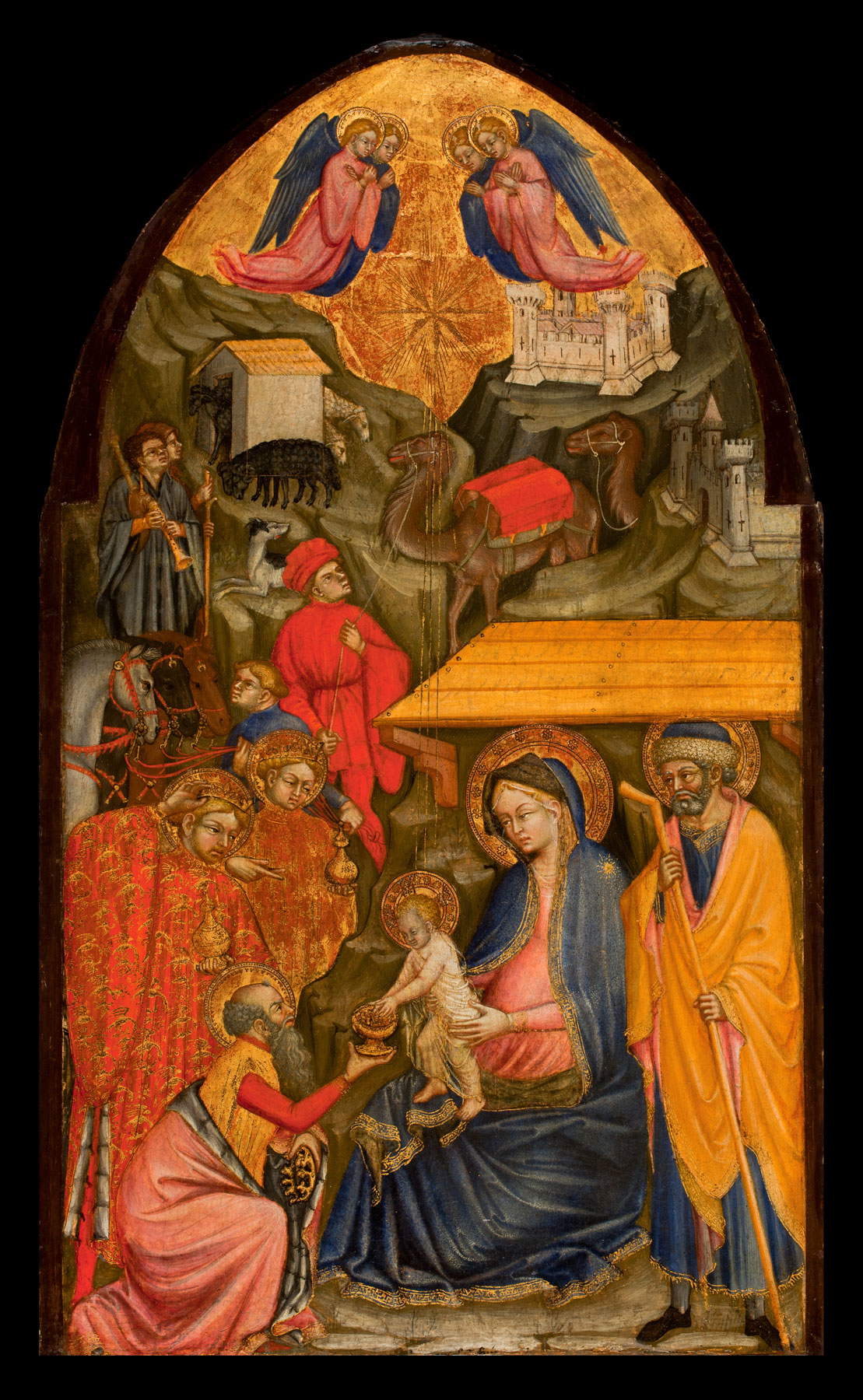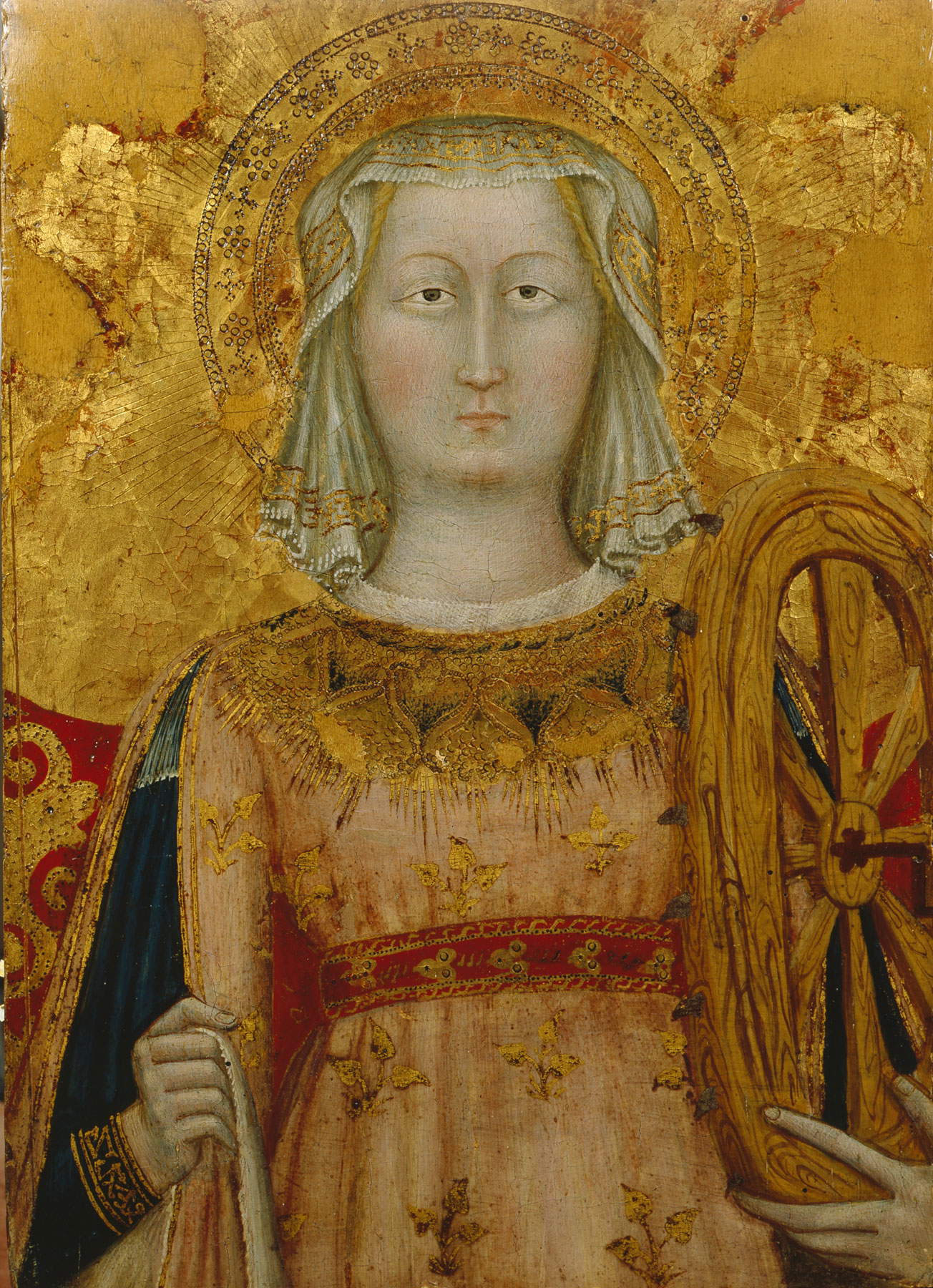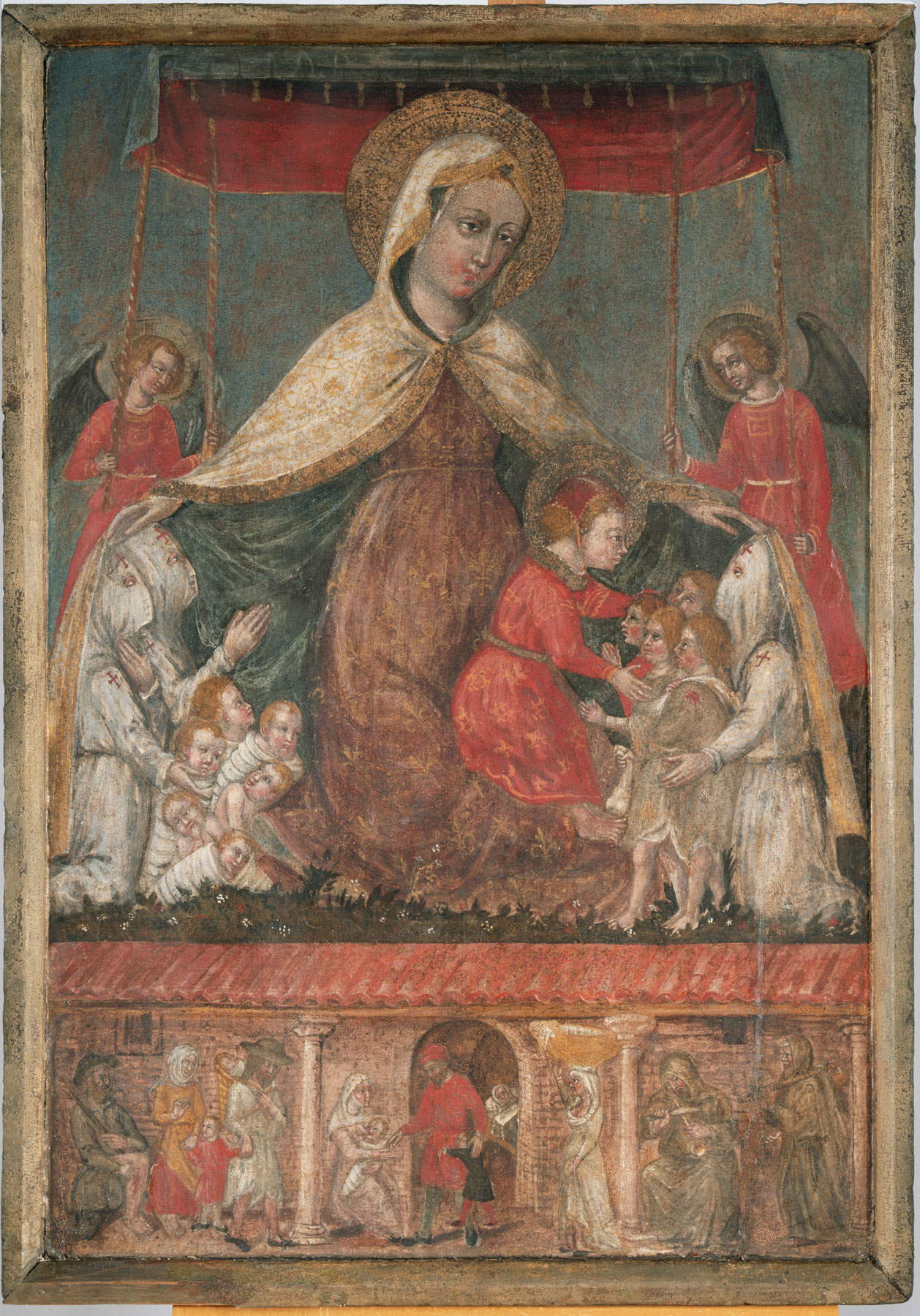A monographic exhibition dedicated to Ottaviano Nelli (Gubbio, c. 1370 - 1448-1449), one of the major Umbrian painters of the late Gothic period: this is the one that is scheduled from September 23, 2021 to January 9, 2022 in Gubbio, in the dual venue of the Ducal Palace and the Palazzo dei Consoli. Entitled Ottaviano Nelli and the 15th Century in Gubbio. Gold and Color in the Heart of the Apennines, it brings together the most important works of the Gubbio painter Ottaviano Nelli, such as polyptychs, anconettes and torn frescoes, and at the same time proposes an interpretation of the artist’s deep connection with the city and the territory of which he was the highest expression in his time. The exhibition, curated by Andrea De Marchi and Maria Rita Silvestrelli, is promoted by the Regional Museums Directorate of Umbria, the Municipality of Gubbio, Palazzo Ducale di Gubbio and Palazzo dei Consoli with the contribution of the Region of Umbria, the support of the Fondazione Cassa di Risparmio di Perugia, in collaboration with the Soprintendenza Archeologia Belle Arti e Paesaggio dell’Umbria, the Diocese of Gubbio, Gubbio Cultura and Multiservizi, the Festival del Medioevo and the Galleria Nazionale dellUmbria. The organization is entrusted to Maggioli Cultura.
Ottaviano di Martino Nelli is the most important artist the city of Gubbio has had: trained in the sphere of late Gothic culture, he knew how to blend local tradition with elements drawn from Lombard painting and French miniature, developing a personal language close to the solutions of Lorenzo Salimbeni and Gentile da Fabriano. In Gubbio, where he was repeatedly appointed consul of the city, he headed a very active workshop that exerted some influence in Umbria and Marche. The central theme of the exhibition, therefore, is that fifteenth-century Gubbio of which Ottaviano Nelli was an undisputed protagonist. The rooms of the Ducal Palace and Palazzo dei Consoli thus present some of the qualitatively highest and most emblematic evidence of his art, with targeted loans from important institutions and private collections. The exhibition is divided into two sections: at the Ducal Palace Ottaviano Nelli, Precious Painter, while at the Palazzo dei Consoli The Legacy of Nelli in Gubbio is narrated. Ottaviano Nelli was primarily a painter of frescoes, but altarpieces and diptychs of individual devotion will also be on view.
The fulcrum of the exhibition at the Ducal Palace is the integral reconstruction, for the first time, of a large Franciscan pentitic currently dismembered and preserved in five different locations in Italy, France and the United States. It centrally consists of the Adoration of the Magi, from the Worcester Art Museum in Massachusetts, along with the side panels Circumcision of the Child Jesus and Mystical Marriage of St. Francis with Poverty, accompanied by Obedience and Chastity from the Pinacoteca of the Vatican Museums, St. Jerome in the Desert from the Musée du petit Palais in Avignon, Herod and Herodias Accused by St. John the Baptist from the Roberto Longhi Foundation in Florence, and Unanimula of the Baptist Taken to Heaven by Two Angels (known only from photographs). It is the rediscovery of a jewel that is reassembled in its original appearance and exhibited in the city for which the work was created, thanks to extraordinary loans: a polyptych with a simple outline, but bizarre in the juxtaposition of such different narrative scenes and with heterogeneous proportional scales.
Also at the Ducal Palace, the triptych purchased by the Italian state precisely in 2021 for the Galleria Nazionale dellUmbria in Perugia and signed by the Orvieto painter Cola Petruccioli, one of the major points of reference for Ottaviano Nelli’s training in the late 14th century, is presented to the public for the first time. Along with Petruccioli is the Sienese Taddeo di Bartolo with a Madonna and Child and Four Musician Angels also from the National Gallery ofUmbria. In the Palazzo dei Consoli, the artistic context and environment of Ottaviano Nelli will be shown, with the Eugubinian Jacopo Bedi, and the secular frescoes of Palazzo Beni, now repurchased by the Municipality of Gubbio for the very occasion of this exhibition.
Considerable scholarly work accompanied the production and realization of the Ottaviano Nelli exhibition in Gubbio, and completing the exhibition is an in-depth catalog, published by Silvana Editoriale, which constitutes a true monograph with a systematic collection of all the works created by Nelli between Umbria and Marche in the arc of his extensive production. “This exhibition,” the curators emphasize, “has only the pretension of laying solid prolegomena for a truly exhaustive monograph on this multifaceted and so representative painter, while at the same time drawing lattention to paintings and contexts that claim to be restored and saved in turn, so as to set in motion other studies and new revelations.”
Finally, the exhibition Ottaviano Nelli and the 1400s in Gubbio aims to be the starting point for effectively recomposing the story of an artist with a strong personality, and wants to be able to convey to the visitor the fascination of discovery, from a historical and artistic point of view, with a unique tribute to Gubbio and its cultural richness.




“Few artists are as representative of the great season of international Gothic as Ottaviano Nelli,” says Andrea De Marchi. “He had the ability to make himself the interpreter of his time, of his people and villages, of a merchant and artisan bourgeoisie in exuberant crisis of vitality of which he was the son. He was voracious and almost bulimic in his assimilation of disparate and even contrasting cues, coining a loquacious and multitasking, easily grasped and colorful language that long conditioned the painters who followed for most of the century. Ottaviano Nelli’s painterly strength was his ability to cross registers and mix levels, the music of angels and the fortore of stabbi, sacred linno and irreverent masquerade, the lilial tenderness of his Madonnas and the rawness of the blood in the streams of martyrs, melancholy sweetness and smug vulgarity. Ottaviano Nelli is a painter with a humorous, at times even mocking vein.”
“The critical fortune of Ottaviano Nelli started from the private correspondences and interests of late 18th-century scholarship,” Maria Rita Silvestrelli points out. “Gradually the painter broke through the artistic historiography and aroused new curiosities that went hand in hand with a growing attention to the city of Gubbio. It was a true rediscovery that of Ottaviano Nelli, and this exhibition brings together all the fascination that still continues in current studies. In his simplicity, Ottaviano was a great storyteller, a tireless creator of scenes taken from everyday life, reproduced with grace and immediacy, anchored in archaic and perennial models, which is why he is able to converse even today with a reality in full transformation and to continue, we must believe, to garner acclaim.”
“The municipality of Gubbio, in harmony with the offices of the Ministry of Culture in Umbria and Marche and the municipalities and dioceses of Gubbio and Fabriano, in a logic of territorial integration to which we have been working for some time,” says the mayor of Gubbio, Filippo Maria Stirati, “has been strongly committed to ensuring that this exhibition was not a mere exhibition, but an authentic moment of cultural growth: for this reason, too, we thought it appropriate to bring back permanently to Gubbio some important fragments of frescoes that Nelli painted for Palazzo Beni, in the San Martino district, detached at the end of the nineteenth century and sold to the highest bidder. Compared to a past of spoliation, theft and improvident alienation, we wanted to recapture the cultural heritage, returning it to public enjoyment. Under the authoritative and prestigious guidance of Prof. Andrea De Marchi and Prof. Maria Rita Silvestrelli, more than ten scholars, including some young graduates and art history majors, have for months beaten the tracks of Ottaviano Nelli, reconstructed his work, walked in his footsteps as much in archives as inside churches, chapels, oratories and noble palaces. They intercepted art dealers, scouted out antiquarians, investigated collectors and followed the trajectories of the works that left Gubbio between the nineteenth and twentieth centuries. The result of such intense, engaging and meticulous work is this exhibition, under the banner of a cultural path over the years so longed for and that now, finally, thanks to the synergistic efforts of the Municipality, Superintendence and Diocese sees the light.”
"he synergy between the Regional Directorate of Museums Umbria, with its Ducal Palace, and the municipal administration, which began in 2018 thanks to the exhibition Gubbio at the time of Giotto. Tesori darte nella terra di Oderisi," highlights Marco Pierini, director of the Direzione Regionale Musei Umbria, “is renewed and strengthened today with this exhibition event. The two moments represent, in fact, the partitions of the same story at the center of which is Gubbio. The cognitive investigation of the city and its territory is declined in the first case through the industriousness of those masters who, from Guido di Pietro, father of Oderisi, handed down the craft to Mello, the main Eugubine painter of the fourteenth century and, if the local tradition should one day find documentary confirmation, grandfather of Ottaviano di Martino. The absolute protagonist of this second chapter, Ottaviano is both an eyewitness to the rise of communal freedoms, with the arrival of Antonio di Montefeltro in 1384, and to the affirmation of new elites in the political-administrative apparatuses, of which he himself is called upon to be a part in several circumstances. The year 2022 will see the synergy between Direzione Regionale Musei dellUmbria and the Municipality of Gubbio renewed once again, with events dedicated to Federico da Montefeltro on the VI centenary of his birth.”



In addition to the display of the works, the exhibition
The exhibition opens Sept. 23 from 8 to 11 p.m.; Sept. 24 and 25 from 10 a.m. to 11 p.m. Sept. 26 to Nov. 1 daily 10am-6:30pm; Nov. 2 to Nov. 30 daily 10am-6pm Monday through Thursday, 10am-6:30pm Friday, Saturday and Sunday; Dec. 1 to Jan. 9, 2022 daily 10am-6:30pm. Last admission half an hour before closing. Special openings will be scheduled during events and holidays.
Single ticket Exhibition + Museums: Full 10; reduced A 6 (European Union citizens aged 18-25; groups of at least 15; Marche National Gallery ticket holders; ticket holders of at least one of the museums in the METU network, Northeast Passage; reduced B 3 (children aged 6-18). You can purchase tickets online at the exhibition website > www.mostranelligubbio.it.Per information: IAT Gubbio office tel. 075 9220693 - info@iat.gubbio.pg.it. The exhibition also has its own website: www.mostranelligubbio.it.
 |
| In Gubbio an exhibition all about Ottaviano Nelli, great master of the Umbrian 15th century |
Warning: the translation into English of the original Italian article was created using automatic tools. We undertake to review all articles, but we do not guarantee the total absence of inaccuracies in the translation due to the program. You can find the original by clicking on the ITA button. If you find any mistake,please contact us.